ВУЗ: Казахская Национальная Академия Искусств им. Т. Жургенова
Категория: Книга
Дисциплина: Не указана
Добавлен: 03.02.2019
Просмотров: 21607
Скачиваний: 19
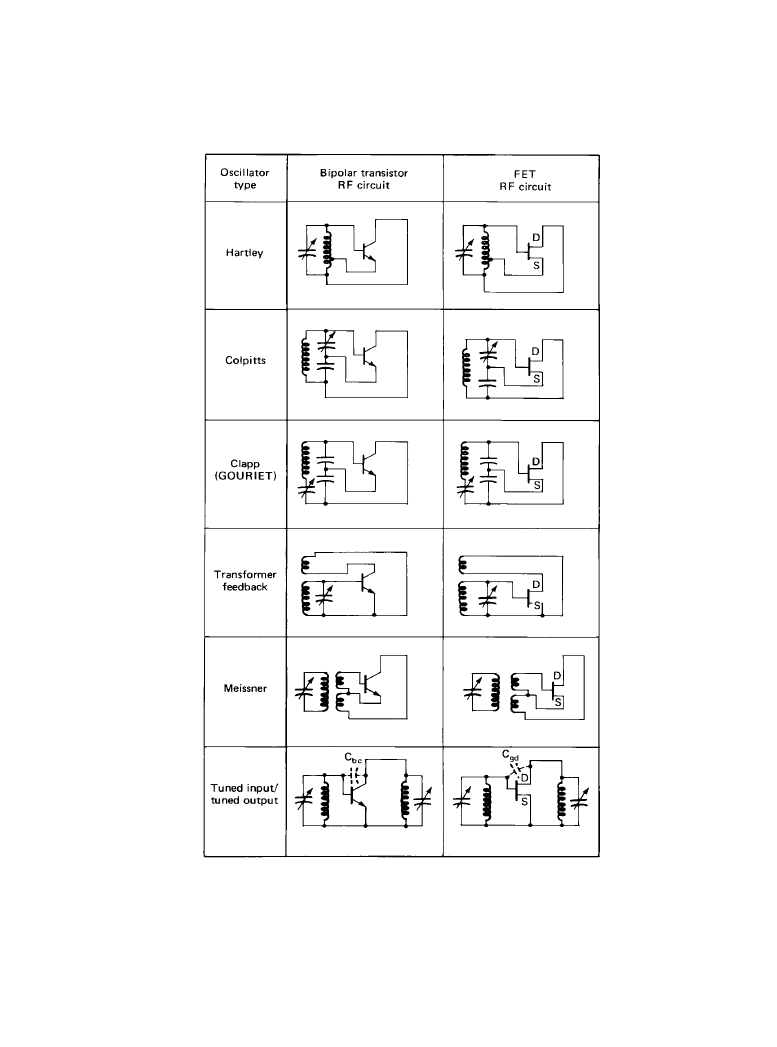
12-58 Radio Receivers
Figure 12.3.16
Schematic diagrams of common oscillator circuits using vacuum-tube, transistor,
and FET active circuits. (
From [1]. Used with permission.)
Downloaded from Digital Engineering Library @ McGraw-Hill (www.digitalengineeringlibrary.com)
Copyright © 2004 The McGraw-Hill Companies. All rights reserved.
Any use is subject to the Terms of Use as given at the website.
AM and FM Receivers
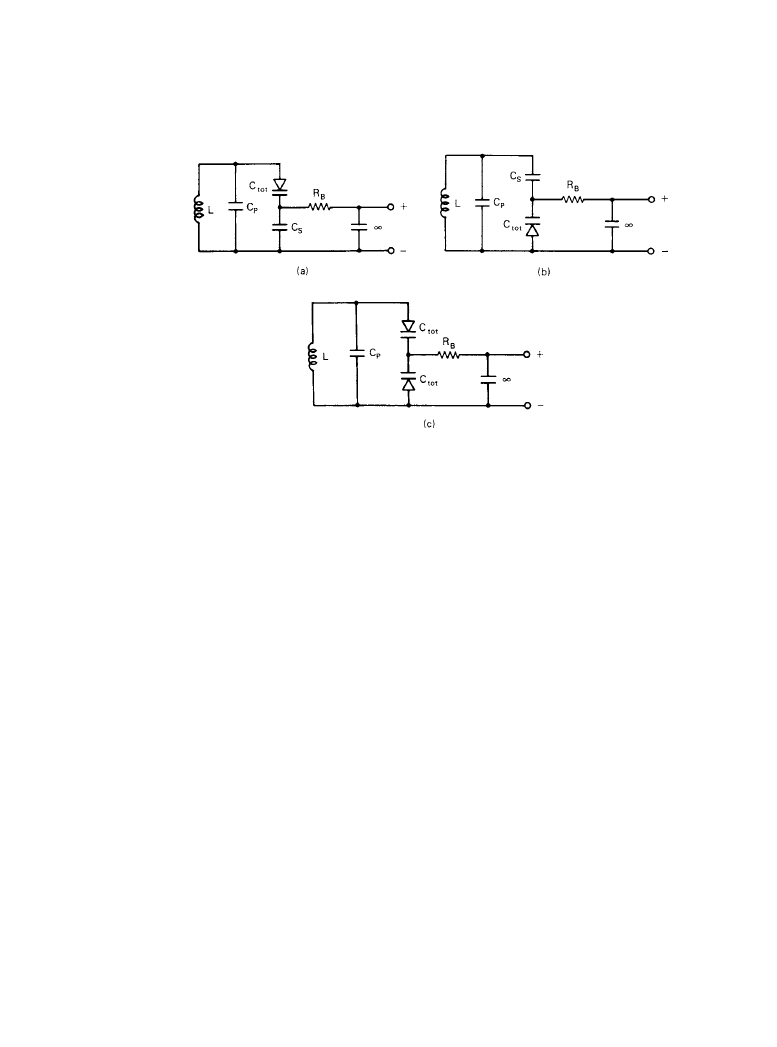
AM and FM Receivers 12-59
Crystal-Controlled Oscillator
Piezoelectric quartz crystals are the basis for most PLL reference oscillators. Quartz crystals
have resonances that are much more stable than the LC circuits discussed so far and also have
very high Q. Consequently, quartz crystal resonators are typically used for high-stability fixed-
frequency oscillators. A piezoelectric material is one that develops a voltage when it is under a
mechanical strain or is placed under strain by an applied voltage. A physical piece of such mate-
rial, depending upon its shape, can have a number of mechanical resonances. By appropriate
shaping and location of the electrodes, one or another resonant mode of vibration can be favored,
so that the resonance may be excited by an external voltage.
The crystal exhibits at its frequency of oscillation the equivalent electric circuit shown in Fig-
ure 12.3.19. The series resonant circuit represents the effect of the crystal vibrator, and the shunt
capacitance is the result of the coupling plates and of capacitance to surrounding metallic objects
(such as the metal case). The resonant circuit represents the particular vibrating mode that is
excited. If more than one mode can be excited, a more complex circuit would be required to rep-
resent the crystal.
The most common type of circuit using a fundamental (AT) crystal is an aperiodic oscillator,
which has no selective circuits other than the crystal. Such oscillators, often referred to as paral-
lel resonant oscillators, use the familiar Pierce and Clapp configurations (see Figure 12.3.20).
12.3.3f
AM-FM Demodulation
The function of any receiver is to recover the original information used to modulate the transmit-
ter. This process is referred to as demodulation, and the circuits that perform the recovery are
Figure 12.3.17
Typical tuning circuits using varactor diodes as the control element: (
a) single
diode in the circuit low side, (
b) single diode in the circuit high side, (c) two diodes in a series back-
to-back arrangement. (
From [2]. Used with permission.)
Downloaded from Digital Engineering Library @ McGraw-Hill (www.digitalengineeringlibrary.com)
Copyright © 2004 The McGraw-Hill Companies. All rights reserved.
Any use is subject to the Terms of Use as given at the website.
AM and FM Receivers
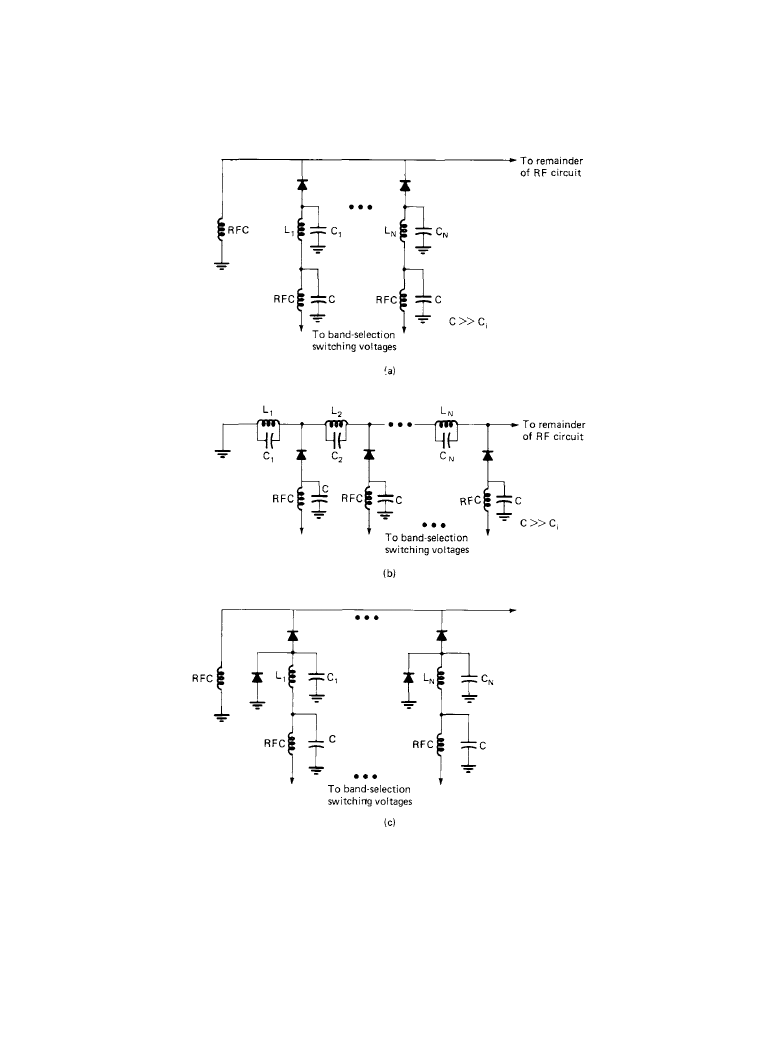
12-60 Radio Receivers
Figure 12.3.18
Typical circuits using diodes for band switching: (
a) series diode arrangement, (b)
shunt-diode arrangement, (
c) use of both series and shunt diodes. (From [1]. Used with permis-
sion.)
Downloaded from Digital Engineering Library @ McGraw-Hill (www.digitalengineeringlibrary.com)
Copyright © 2004 The McGraw-Hill Companies. All rights reserved.
Any use is subject to the Terms of Use as given at the website.
AM and FM Receivers
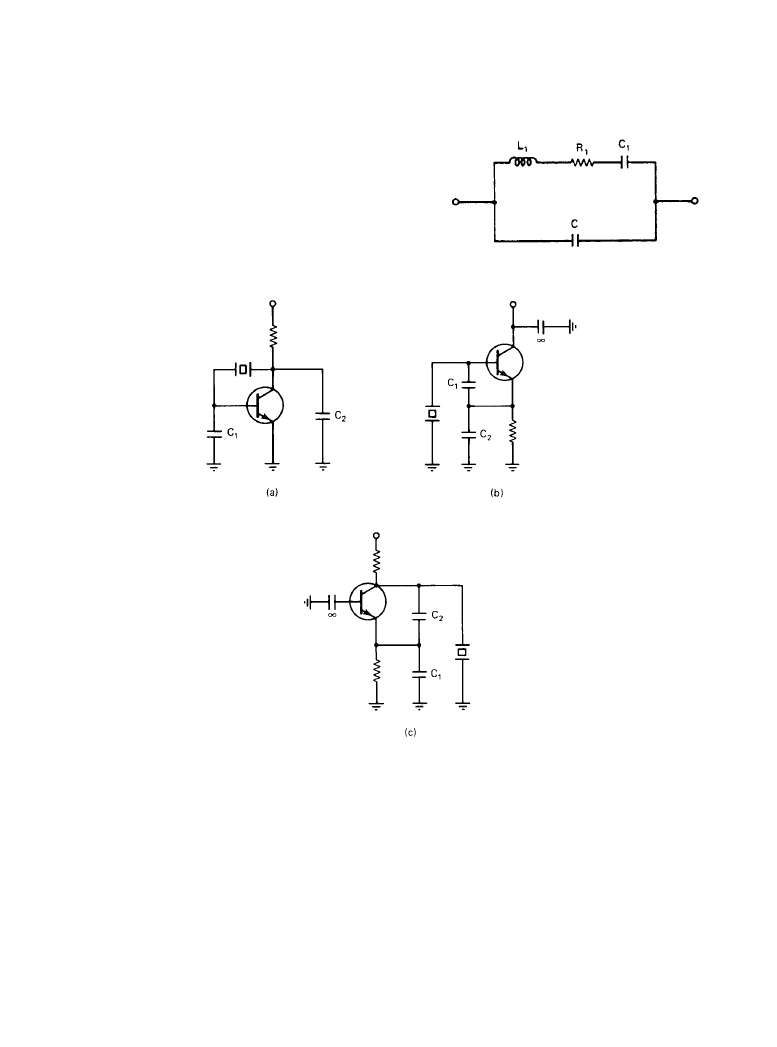
AM and FM Receivers 12-61
called demodulators. The term detector is also used, and the demodulator in a single-superhet-
erodyne receiver is sometimes called a second detector. Today, however, the term detector is sel-
dom used in this fashion.
Because of transmission and reception system distortions and noise caused by thermal, atmo-
spheric, and artificial sources, the demodulated signal is—to some extent—a distorted version of
Figure 12.3.19
The equivalent electric circuit of a
crystal at resonance (spurious and overtone modes
not shown).
Figure 12.3.20
Common parallel resonant circuits used in fundamental crystal oscillators: (
a)
Pierce circuit, (
b) Clapp circuit, collector grounded, (c) Clapp circuit, base grounded. (From [2].
Used with permission.)
Downloaded from Digital Engineering Library @ McGraw-Hill (www.digitalengineeringlibrary.com)
Copyright © 2004 The McGraw-Hill Companies. All rights reserved.
Any use is subject to the Terms of Use as given at the website.
AM and FM Receivers
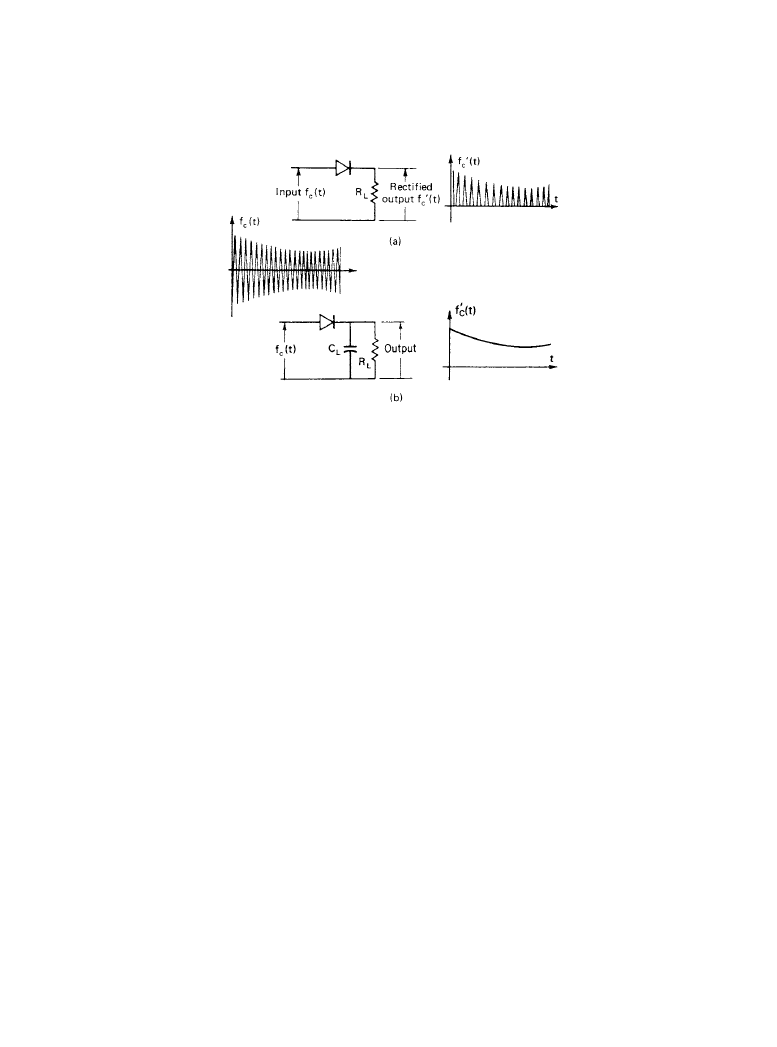
12-62 Radio Receivers
the original modulating signal and is corrupted by the addition of noise. It is the obvious goal of
the demodulator to minimize these corrupting effects and provide an output signal that is as close
to the original modulating waveform as possible.
Analog modulated waves come in a variety of forms, including:
•
Conventional AM
•
Double-sideband suppressed carrier (DSSC) AM
•
Single-sideband (SSB) AM
•
Vestigial-sideband (VSB) AM
•
Phase modulation (PM)
•
Frequency modulation (FM)
For the purposes of this discussion, we will concentrate on the two forms used for AM-FM
broadcast transmission.
AM Demodulation
An AM signal is made up of an RF sinusoid whose envelope varies at a relatively slow rate about
an average (carrier) level. Any sort of rectifier circuit will produce an output component at the
modulation frequency. Figure 12.3.21 illustrates two of the simple diode rectifier circuits that
may be used, along with idealized waveforms. The average output of the rectifier of Figure
12.3.21a is proportional to the carrier plus the signal. The circuit exhibits, however, significant
output energy at the RF and its harmonics. A low-pass filter is necessary to eliminate these com-
ponents. If the selected filter incorporates a sufficiently large capacitor at its input, the effect is
to produce a peak rectifier, with the idealized waveform shown in Figure 12.3.21b. In this case
Figure 12.3.21
AM demodulators with idealized waveforms: (
a) average demodulator and result-
ing waveform, (
b) envelope detector and resulting waveform. (From [1]. Used with permission.)
Downloaded from Digital Engineering Library @ McGraw-Hill (www.digitalengineeringlibrary.com)
Copyright © 2004 The McGraw-Hill Companies. All rights reserved.
Any use is subject to the Terms of Use as given at the website.
AM and FM Receivers